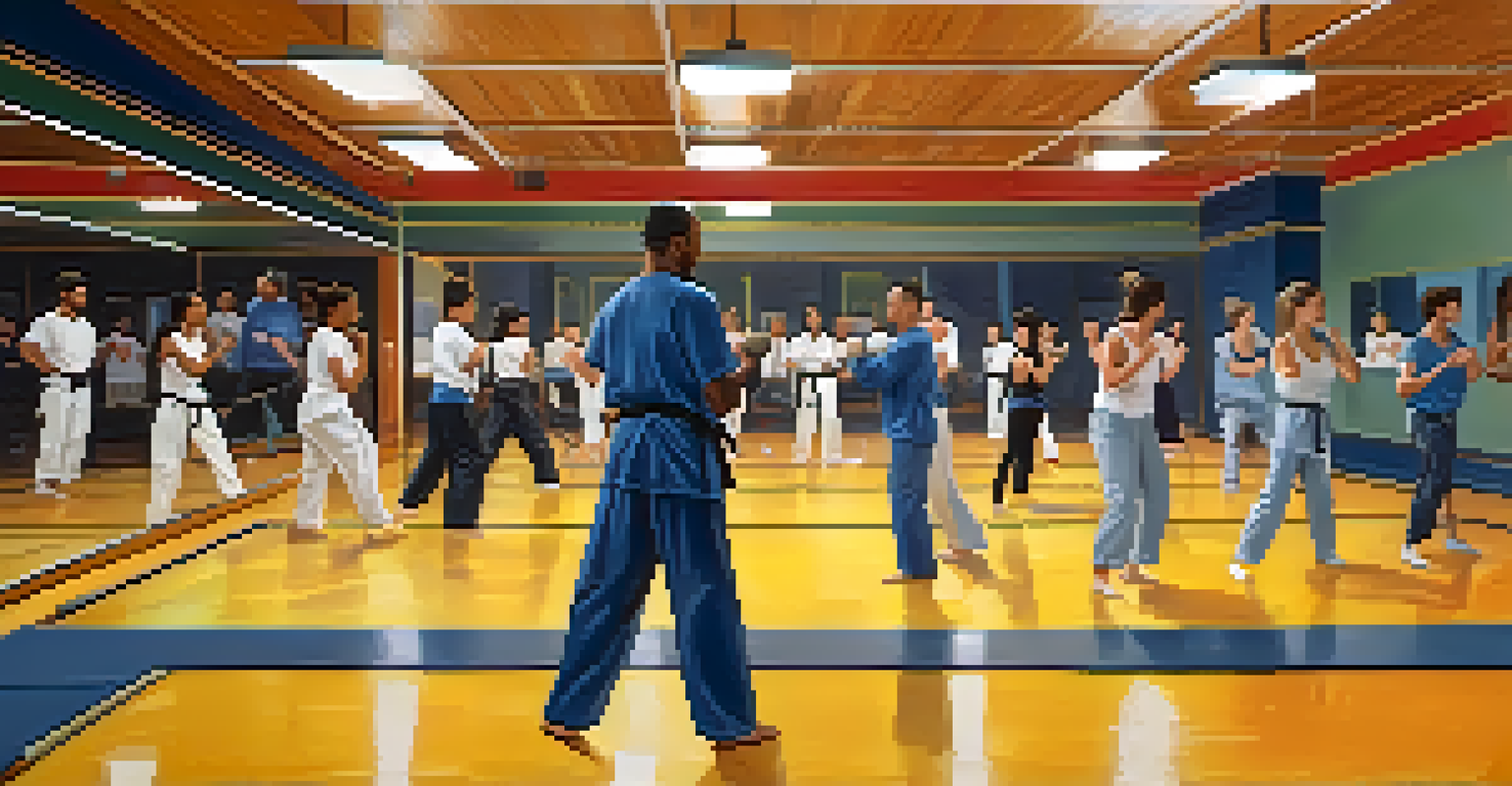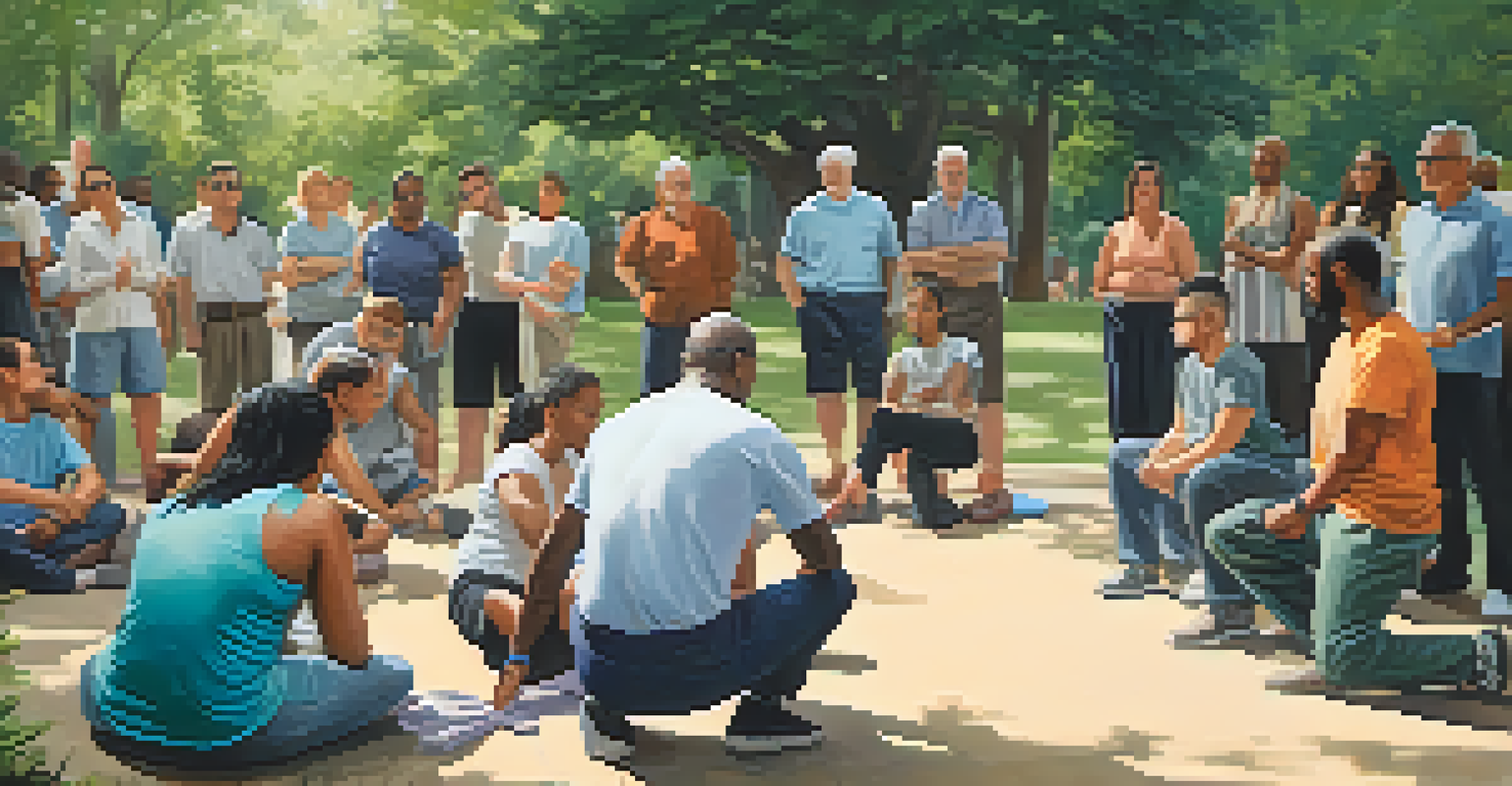Integrating Self Defense with Communication Skills for Safety

Understanding the Importance of Self Defense and Communication
Self-defense isn’t just about physical skills; it’s also about being aware of your surroundings and communicating effectively. When you think of self-defense, images of martial arts might come to mind, but it's equally important to understand how to express yourself in potentially dangerous situations. Good communication can often de-escalate a situation before it becomes physical, making it a vital part of personal safety.
The best defense is a good offense.
Many people underestimate the power of body language and verbal skills in self-defense. For example, a confident posture and clear, assertive speech can deter aggressors. By communicating your boundaries and intentions clearly, you’re not only asserting yourself but also sending a message that you’re not an easy target.
Combining self-defense techniques with strong communication skills creates a holistic approach to personal safety. This synergy allows individuals to navigate tricky situations with a level head and the ability to articulate their needs, ultimately enhancing their sense of security.
The Role of Body Language in Self Defense
Body language plays a crucial role in how we communicate and can significantly influence our safety. Non-verbal cues such as posture, eye contact, and facial expressions convey confidence and authority. For instance, standing tall and making eye contact can signal to potential threats that you are aware and in control.

Conversely, slouched shoulders and avoiding eye contact may invite unwanted attention. Imagine walking down a street; if you appear distracted or lost, you might attract trouble. By being mindful of how you carry yourself, you can project an aura of self-assurance, which often deters aggressors.
Self-Defense Requires Communication
Effective communication can de-escalate potentially dangerous situations, making it a crucial aspect of personal safety.
Integrating strong body language with your self-defense strategies ensures that you not only can defend yourself physically but also communicate strength without saying a word. This dual approach can be a game-changer in maintaining personal safety.
Verbal Communication: The First Line of Defense
Verbal communication can be your most effective tool in a threatening situation. Using your voice to assertively state your boundaries can often diffuse tension before it escalates. For example, a firm 'Leave me alone!' can be much more effective than silence when confronted by an aggressor.
In any situation, the best thing you can do is to stay calm and communicate clearly.
It’s essential to practice using a strong, clear voice. This doesn’t mean yelling, but rather speaking with confidence and clarity. Just like in a business meeting, where clear communication fosters understanding, it’s crucial in self-defense scenarios as well.
By honing your verbal skills, you create an additional layer of protection. The ability to articulate your needs and assert your rights can empower you and potentially dissuade someone from proceeding with harmful intentions.
Situational Awareness: Staying One Step Ahead
Situational awareness is the cornerstone of both self-defense and effective communication. It involves being aware of your environment and the people around you, allowing you to anticipate potential threats. For instance, if you notice someone following you, being aware of your surroundings can help you find a safe route or seek help.
This heightened sense of awareness also enhances your communication skills. When you’re alert to your environment, you’re better equipped to engage with others appropriately, whether it’s asking for assistance or asserting your boundaries. Think of it as keeping your radar up; the more you can read the room, the better decisions you can make.
Body Language Signals Confidence
Strong body language, such as posture and eye contact, can project authority and deter aggressors.
By integrating situational awareness with self-defense training, you empower yourself to react effectively and communicate your needs clearly. This combination can significantly enhance your safety in various situations.
Practicing Self Defense Techniques with Communication
Practicing self-defense techniques is vital, but incorporating communication drills can take your training to the next level. Consider scenarios where you practice both physical responses and verbal assertions simultaneously. For example, while practicing a defensive move, pair it with a strong verbal cue to reinforce your message.
Role-playing exercises can be particularly beneficial. By simulating real-life situations, you can experience firsthand how to communicate effectively while executing self-defense moves. This not only builds muscle memory but also enhances your comfort in using both physical and verbal skills in tandem.
Regular practice of these integrated skills prepares you for unexpected situations. Just like rehearsing for a presentation, the more you practice, the more confident you’ll be when it matters most.
Building Confidence through Training
Confidence plays a pivotal role in both self-defense and communication. When you train regularly, whether in physical self-defense or communication skills, you build a sense of self-assurance that can be invaluable. This confidence can deter potential threats, as aggressors often target those who seem vulnerable.
Moreover, the more skilled you become, the more capable you feel in handling various situations. Think of it like learning to ride a bike; at first, it’s daunting, but with practice, you gain balance and confidence. This newfound assurance not only helps you in self-defense scenarios but also in everyday interactions.
Training Builds Confidence and Skills
Regular practice of self-defense and communication techniques enhances confidence, empowering individuals to handle various situations.
Ultimately, building confidence through training empowers you to approach life with a greater sense of security. This confidence in your abilities translates into better communication and a stronger presence in any environment.
Creating a Supportive Community for Safety
A supportive community can significantly enhance personal safety. Engaging with friends, family, or local organizations that focus on self-defense and communication can create a network of support. Sharing experiences and knowledge with others helps everyone feel more empowered and informed.
Consider joining local classes or workshops that promote both self-defense techniques and communication skills. These environments foster camaraderie and allow individuals to practice together, reinforcing their skills while building connections. Just like a team sport, having a support system can make a world of difference.

By cultivating a sense of community focused on safety, you not only enhance your own skills but also contribute to a culture of awareness and preparedness. Together, you can create a safer environment for everyone.